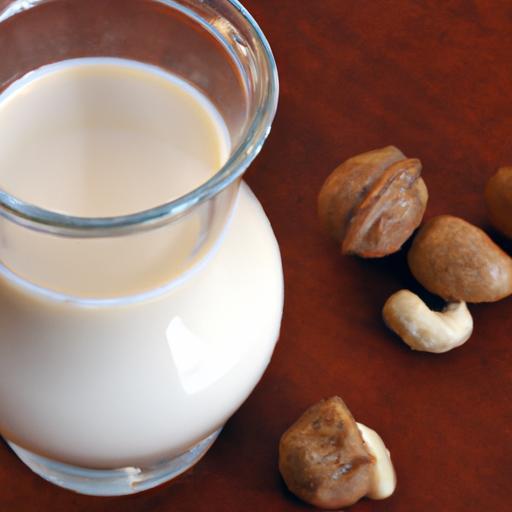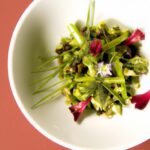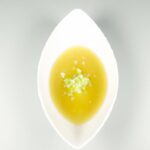In a world brimming with plant-based alternatives, few homemade delights capture the essence of nature’s bounty quite like creamy hickory nut milk. This silky, nutty elixir offers a rich, earthy flavor that transforms ordinary recipes into extraordinary experiences. Whether you’re a devoted vegan, a culinary adventurer, or simply someone seeking a wholesome twist on traditional milk, crafting your own hickory nut milk at home unlocks a world of nourishment and creativity. Join us as we dive into a step-by-step guide that will turn humble hickory nuts into a luscious, dairy-free treat-one creamy, satisfying sip at a time.
Crafting Creamy Hickory Nut Milk: A Step-by-Step Guide
Crafting creamy hickory nut milk at home is a rewarding ritual steeped in nature’s bounty and timeless tradition. With its subtly sweet and nutty character, hickory nut milk offers an indulgent alternative to common plant-based milks. Whether you’re looking to elevate smoothies, create luscious coffee creamers, or enrich baking recipes, mastering this velvety beverage is an art worth perfecting.
Prep and Cook Time
Preparation: 12 hours soaking + 10 minutes blending
Total Time: 12 hours 15 minutes
Yield
Approximately 4 cups (1 liter) of hickory nut milk
Difficulty Level
Medium – requires soaking time and attentive blending for optimal texture
Ingredients
- 1 cup raw hickory nuts, shelled and lightly rinsed
- 4 cups filtered water, plus extra for soaking
- 2 Medjool dates, pitted (optional for sweetness)
- 1/2 teaspoon vanilla extract (optional)
- 1/4 teaspoon ground cinnamon (optional, enhances warmth and depth)
- Pinch of sea salt (balances flavor)
Instructions
- Choose the perfect nuts: Select hulled hickory nuts that feel firm and heavy with no signs of mold or shriveling. Freshness is essential for rich creaminess and avoiding bitterness.
- Soak the nuts: Place the hickory nuts in a large bowl and cover with filtered water by at least 2 inches. Soak 12 hours or overnight to soften and neutralize tannins, which yields smooth milk.
- Rinse thoroughly: Drain and rinse the soaked nuts well with fresh water to wash away any residue or bitterness.
- Blend into milk: Combine soaked hickory nuts and 4 cups of filtered water in a high-speed blender. Add dates, vanilla, cinnamon, and sea salt if using. Blend on high for 2-3 minutes until silky and homogeneous. Stop to scrape down sides to ensure a full emulsification.
- Strain for ultimate smoothness: Pour the blended mixture through a nut milk bag or fine mesh sieve into a large bowl. Gently squeeze or press to extract every drop. The strained pulp can be repurposed in baking or granola.
- Store properly: Transfer milk to a clean glass container and refrigerate. Shake well before each use as natural separation occurs. Consume within 4-5 days for peak freshness.
Tips for Success
- Soaking is the most crucial step for creamy and digestible milk. Don’t rush this step!
- If your blender is less powerful, extend blending time or break into two batches for a smoother result.
- Experiment with spices such as cardamom or nutmeg for unique flavor twists.
- To make milk creamier, reduce water to 3 ½ cups or add a tablespoon of soaked cashews in the blend.
- Leftover nut pulp can be dried and powdered to add fiber to smoothies or baked goods.
Serving Suggestions
Enjoy your homemade hickory nut milk chilled over morning cereal or stirred into coffee for a naturally creamy touch. Garnish with a sprinkle of cinnamon or a drizzle of maple syrup for extra indulgence. It’s equally delightful warm-with a pinch of turmeric-for a cozy, antioxidant-rich latte. Use it as a base in your baking recipes for moist cakes or creamy vegan sauces that will impress every palate.

| Nutrient | Per 1 cup (240ml) |
|---|---|
| Calories | 150 kcal |
| Protein | 4 g |
| Carbohydrates | 8 g |
| Fat | 12 g |
For more nut milk and dairy-free recipes, check out our detailed Vegan Nut Milk Recipes Collection. To learn the nutritional science behind plant-based milks, visit Healthline’s overview on Plant Milks.
Q&A
Q&A: Crafting Creamy Hickory Nut Milk – A Step-by-Step Guide
Q1: What makes hickory nut milk different from other nut milks?
A1: Hickory nut milk boasts a uniquely rich, buttery flavor with subtle smoky undertones, setting it apart from the usual almond or cashew milk. Its creamy texture and earthy depth offer a nostalgic taste that harks back to Southern kitchens and forest foraging traditions.
Q2: Why should I try making hickory nut milk at home?
A2: Homemade hickory nut milk not only delivers a fresher, preservative-free experience but also allows you to connect with nature’s bounty. It’s a delightful way to utilize foraged nuts, reduce waste, and customize sweetness or thickness to your liking.
Q3: What’s the first step in crafting this luscious milk?
A3: Begin by soaking shelled hickory nuts overnight in cool water. This softens the tough nuts, making them easier to blend and unlocking their creamy essence. Think of it as awakening the nuts’ hidden richness with a gentle midnight soak.
Q4: How do I ensure my hickory nut milk is silky smooth?
A4: After soaking, blend the nuts with pure, cold water in a high-speed blender until fully pulverized. Then, strain the mixture through a fine mesh bag or cheesecloth to separate the creamy milk from the coarse pulp, leaving you with a velvety liquid ready for sipping.
Q5: Can I add flavors to enhance my hickory nut milk?
A5: Absolutely! A dash of vanilla extract, a sprinkle of cinnamon, or a touch of maple syrup can harmonize beautifully with the nut’s natural smokiness. Experiment with these complements to craft a personalized elixir that delights your palate.
Q6: How should I store the homemade hickory nut milk?
A6: Keep your nut milk chilled in a sealed glass jar for up to three days. Give it a gentle shake before pouring, as natural separation may occur. Treat it as a fresh craft treasure-you’ll want to enjoy it before its delicate flavors mellow.
Q7: Are there any creative ways to use leftover hickory nut pulp?
A7: Don’t toss that precious pulp! Transform it into energy balls, enrich your morning oatmeal, or blend it into baked goods for a nutty boost. It’s sustainable and adds a mellow, smoky nuance to your culinary creations.
Q8: Is hickory nut milk a good alternative for people with nut allergies?
A8: Hickory nuts are classified as tree nuts, so this milk isn’t safe for individuals with tree nut allergies. However, its bold flavor and creamy profile can inspire experimenting with other nut-free milks crafted from seeds or grains.
Q9: What season is best for harvesting hickory nuts for milk?
A9: The ideal time is late fall, typically between September and November, when mature hickory nuts fall naturally from the tree. Freshly harvested nuts yield the richest milk, imbued with the full spectrum of autumn’s nourishing essence.
Q10: Where can I find hickory nuts if I don’t have access to wild trees?
A10: Specialty farmers’ markets, natural food stores, or online foragers often carry shelled hickory nuts. Sourcing local, organic nuts ensures you’re getting the finest quality for your creamy concoction.
Enjoy the journey of crafting this uniquely creamy, smoky nut milk and savor the enchanting flavors of hickory’s woodland charm!
The Way Forward
As you wrap up your journey through crafting creamy hickory nut milk, remember that each step is an invitation to connect with nature’s rich offerings. From cracking open those earthy nuts to blending and straining, the process is as rewarding as the silky, nutty beverage you’ll savor at the end. Whether you’re crafting it for a wholesome breakfast, a velvety coffee companion, or a secret ingredient in your favorite recipes, homemade hickory nut milk brings a unique depth of flavor and nourishment to your table. So, roll up your sleeves, embrace the ritual, and let this ancient nutty elixir become a delicious new tradition in your kitchen repertoire. Cheers to creativity, sustainability, and the simple joy of sipping something truly homemade!


